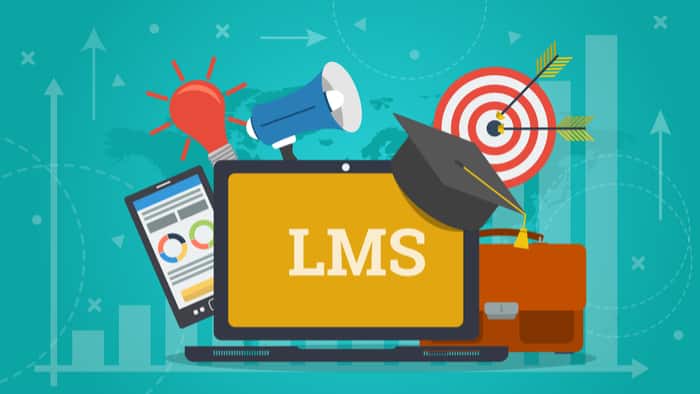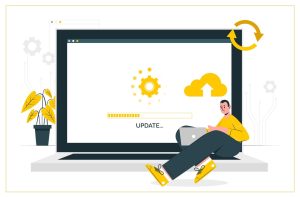LMS: Digital Training Programs Foundation

We are all coming to terms with the fact that online learning is becoming a significant part of the modern standard of education and training all over the world. There are numerous advantages to online learning for everyone. For example, it encourages people of all ages and social backgrounds to continue learning. It also keeps the costs of training workers down for businesses. The recent increase in the use of online learning solutions has shown that eLearning is in high demand now more than ever, and its importance in the education sector is unrivaled. There’s a lot that goes into making a great LMS, and we take pride in offering high-quality eLearning solutions at Centum learning.
Recognizing what makes a good eLearning course necessitates an understanding of what makes a good Learning Management System LMS features checklist as you won’t be able to create a course that checks all the questions without one.
Our team has compiled a list of the most important features of a high-quality e-learning system so that our clients and potential users can understand what they require from an LMS.
- Efficient administration – Any organization or corporation needs to be able to carry out different administrative processes. Your team will almost certainly have to upload several files, make changes, and organize your digital training material. You’ll need a Learning Management System (LMS) with a back-end that’s tailored to your company’s needs, allowing your company to maintain a simple and effective eLearning platform for all users. The Backend has been designed to be as easy to use as possible, so you won’t have to massively retrain the employees to operate the system.
- Characteristics of the Assessment – Quizzes and other types of evaluation are an important part of a Learning Management System (LMS) and a convenient yet efficient way to increase learner interaction. They allow the consumer and the organization to assess their respective strengths and weaknesses. There should also be some variety in the quizzes, such as multiple-choice questions, true/false questions, and, where possible, free form or written responses. Assessments can be a powerful motivator for students and a way to inspire them to keep learning by allowing them to see their progress.
- Monitoring progress – The ability to reliably and effectively review Learner progress is provided by the progress and performance monitoring features. The ability to generate reports and categorize the various groups and individuals that achieve certain thresholds or milestones will be enabled by tracking. A good LMS will have monitoring tools or features that allow trainers or administrators to keep track of these changes. Many Learning Management Systems (LMS) will also allow you to create personalized reports based on your progress. Learners should also be able to view their progress reviews, which could enable them to improve in particular areas and/or enroll in new or more challenging courses.
- Learning that is both versatile and interactive – Since some learners are visual or auditory, prefer written content or reading, or are kinaesthetic learners, everyone learns in their way. They may prefer a combination of a few of the options above! It’s critical to provide a range of different e-learning options that have been designed with different learning styles in mind. Many LMS providers, for example, provide gamification, which makes courses or activities more “game-like.” In addition, other tools, such as podcasts and videos, can be used to ensure that each Learner has a positive learning experience.
- Accessibility – Learners find it convenient and fun to use the app regularly, making mobile learning a simple way to leverage Learner interaction. Learning Management System (LMS) platforms with little to no mobile capabilities were considered to be unsatisfactory by about 24% of LMS users. Users want to be able to learn on the go whenever possible, so accessibility is critical in eLearning. A successful LMS would provide eLearning programs that can be accessed from any location. There will always be a versatile way for Learners to access the content, whether it is from a smartphone, laptop, or tablet. An LMS with features that allow content to be broken down into smaller segments, such as fast videos or podcasts, is also beneficial to the Learner experience.
- Easy to navigate – Naturally, one wants to find a device that’s simple to operate. For instance, a web-based LMS solution is easy to use for almost all users, regardless of their technical context. It’s software that runs via a web browser, and the best part is that it doesn’t need any complicated updates or previous experience with software systems. The ideal Learning Management System (LMS) would have a simple design and the ability to change the interface in ways that complement each organization, making web-based solutions like centum learning smart Learning eXperience Platform (LXP)
- Design & branding – Great branding is at the heart of every company’s identity. Branding is a visual representation of your organization’s values and is thus critical for an eLearning platform. A good Learning Management System (LMS) will give you attractive and user-friendly branding options. The Centum learning LXP platform has well-designed interfaces for your eLearning training material that is tailor-made and personalized to meet your exact requirements. Our team will provide your leaders with branding templates that you can easily modify and add course content to. Our LMS offers sleek branding options that are custom-tailored for each company and client, ensuring a seamless user experience that is both technically and visually appealing.
- Continuous improvement – The Learning Management System (LMS) provider industry and eLearning market are expanding at an exponential rate, and you’ll want a Learning Management System (LMS) that is constantly updated – as well as an LMS provider that is keeping up with new trends and looking for ways to improve their system. Your team wants them to be committed to ensuring that your users receive the best digital training possible and that their LMS is both top-notch and continues to be top-notch!
This is only a quick summary of the many that contribute to a great learning management system features and benefits. This list is first created to serve as a simple guide to help your team become more acquainted with Learning Management Systems (LMS).






